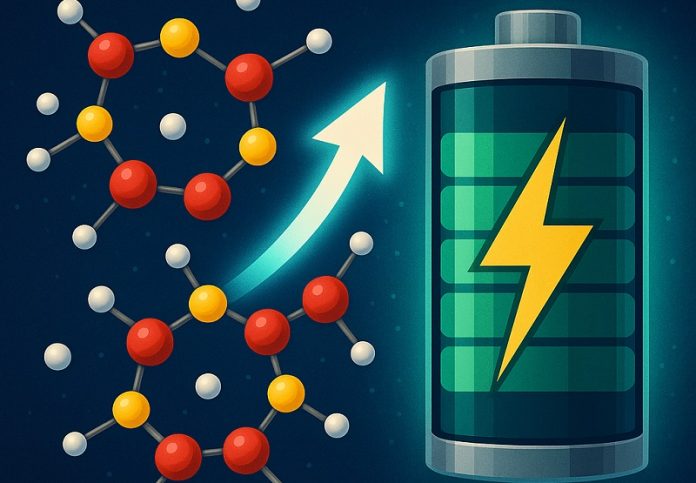
A team of Stanford University researchers has achieved a major breakthrough that could reshape the future of energy storage, MRI technology, and even magnetic levitation trains.
They have created an iron-based material capable of reaching a much higher energy state than previously thought possible.
This discovery could make batteries cheaper, more powerful, and more sustainable — and the results are already sparking excitement across multiple scientific fields.
The story began in 2018 when Stanford Ph.D. student William Gent proposed that iron, one of Earth’s most abundant and inexpensive elements, could be pushed to release and reabsorb more electrons than ever before.
This would allow iron-based materials to hold much more energy, potentially leading to high-voltage, high-capacity batteries. Unfortunately, Gent ran out of time to fully test his theory before completing his doctoral work.
Years later, three Stanford Ph.D. students — Hari Ramachandran, Edward Mu, and Eder Lomeli — picked up where Gent left off. Working with 23 collaborators across the U.S., Japan, and South Korea, they turned his theory into reality.
Their work, recently published in Nature Materials, shows how iron can reach a higher oxidation state and store far more energy than previously thought possible.
The most immediate use for this discovery is in lithium-ion batteries, which power everything from electric cars to smartphones.
However, the researchers believe the new material could also improve technologies like magnetic resonance imaging (MRI) and magnetic levitation for high-speed trains, and even support progress toward superconductors.
So, what makes this iron so special? Normally, iron atoms only use two or three of their 26 electrons in chemical reactions.
Gent theorized it might be possible to make iron release and take back five electrons per atom, dramatically increasing its energy capacity.
To achieve this, the atoms must be arranged so that the iron atoms don’t sit too close to one another — otherwise, unwanted chemical reactions occur, and the material becomes unstable.
When Ramachandran and Mu started experimenting in 2021, they found that the material’s crystal structure kept collapsing when charged. They discovered that making the iron-containing particles extremely small — only 300 to 400 nanometers wide, about 40 times smaller than before — could prevent this problem.
It was a tough task, but in 2022 they succeeded by growing the particles in a carefully designed liquid solution. The result was a stable structure that allowed the iron to reach its higher energy state without falling apart.
Spectral images showed that the material could indeed store more energy, but to confirm what was happening on an atomic level, the team brought in Eder Lomeli, who specializes in modeling how atoms behave under X-rays.
His analysis revealed an unexpected twist: not all the extra electrons came from the iron atoms themselves — some came from oxygen, working in cooperation with iron. As Lomeli explained, “It’s too simple to say that iron or oxygen alone is the hero. They work together as one system.”
This discovery comes at a crucial time for the battery industry. Iron has recently begun replacing expensive and ethically problematic metals like nickel and cobalt in many lithium-ion batteries.
Most cobalt is mined in the Democratic Republic of the Congo under poor working conditions, often involving child labor, and controlled largely by China. By contrast, iron is abundant, low-cost, and widely available.
Today, about 40% of lithium-ion batteries use iron-based cathodes. These are safe and affordable but typically offer lower voltage than nickel or cobalt versions. The new Stanford discovery could change that, creating high-voltage, iron-based batteries that combine low cost with strong performance — “the best of both worlds,” as Mu put it.
The researchers’ new material, called LFSO (made from lithium, iron, antimony, and oxygen), was tested at the SLAC-Stanford Battery Center and showed excellent stability and voltage.
X-ray and neutron experiments at major U.S. laboratories revealed why: when lithium ions leave the material during charging, the crystal structure bends slightly rather than collapsing, allowing the process to repeat without damage.
Now that the team has shown that iron can reach this high oxidation state and remain stable, the next step is to make it practical for real-world use. The researchers are refining the material’s shape, chemistry, and structure — and are also looking to replace antimony, which is costly and has supply chain issues.
“Scientists have rarely seen high-voltage iron-based materials,” said Stanford Professor William Chueh, one of the study’s senior researchers. “But now that we know it’s possible, we can start engineering better, cleaner, and more powerful batteries — built from one of Earth’s most common elements.”



